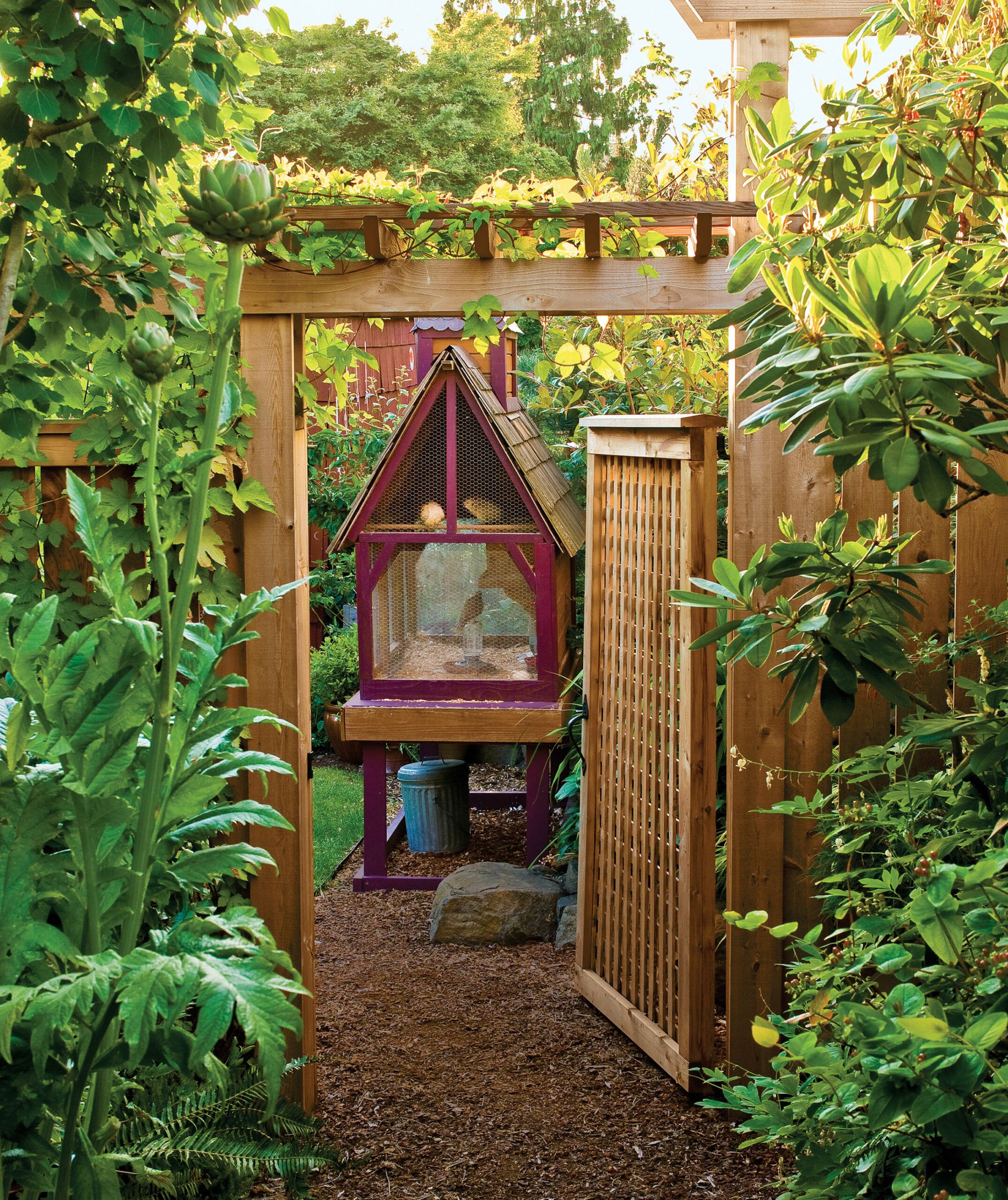Welcome to Jennifer Carlson’s Patch of Green
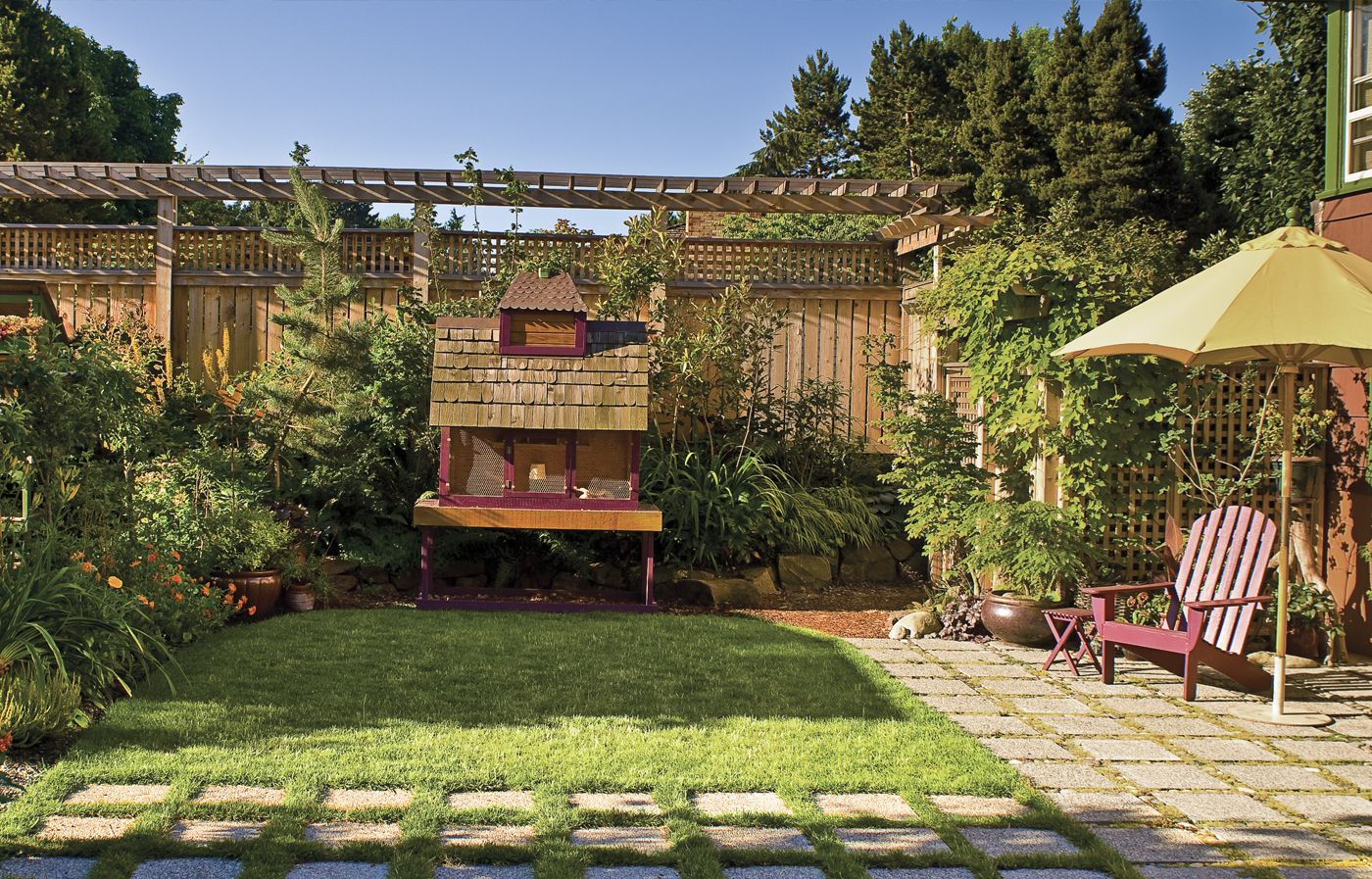
A sustainable garden, one that supports the local ecosystem and spurns chemical intervention, can be as beautiful as it is virtuous. Jennifer Carlson thought about how each part of her Seattle backyard garden could be engineered so that it would add up to one self-supporting loop. From rain barrels that harvest water for irrigation, to permeable paving that allows runoff to percolate into the soil, to a fence that composts garden clippings, every backyard element contributes to the landscape’s sustainability as well as its beauty and productivity. Read on to see how it all works together.
Study Your Surroundings
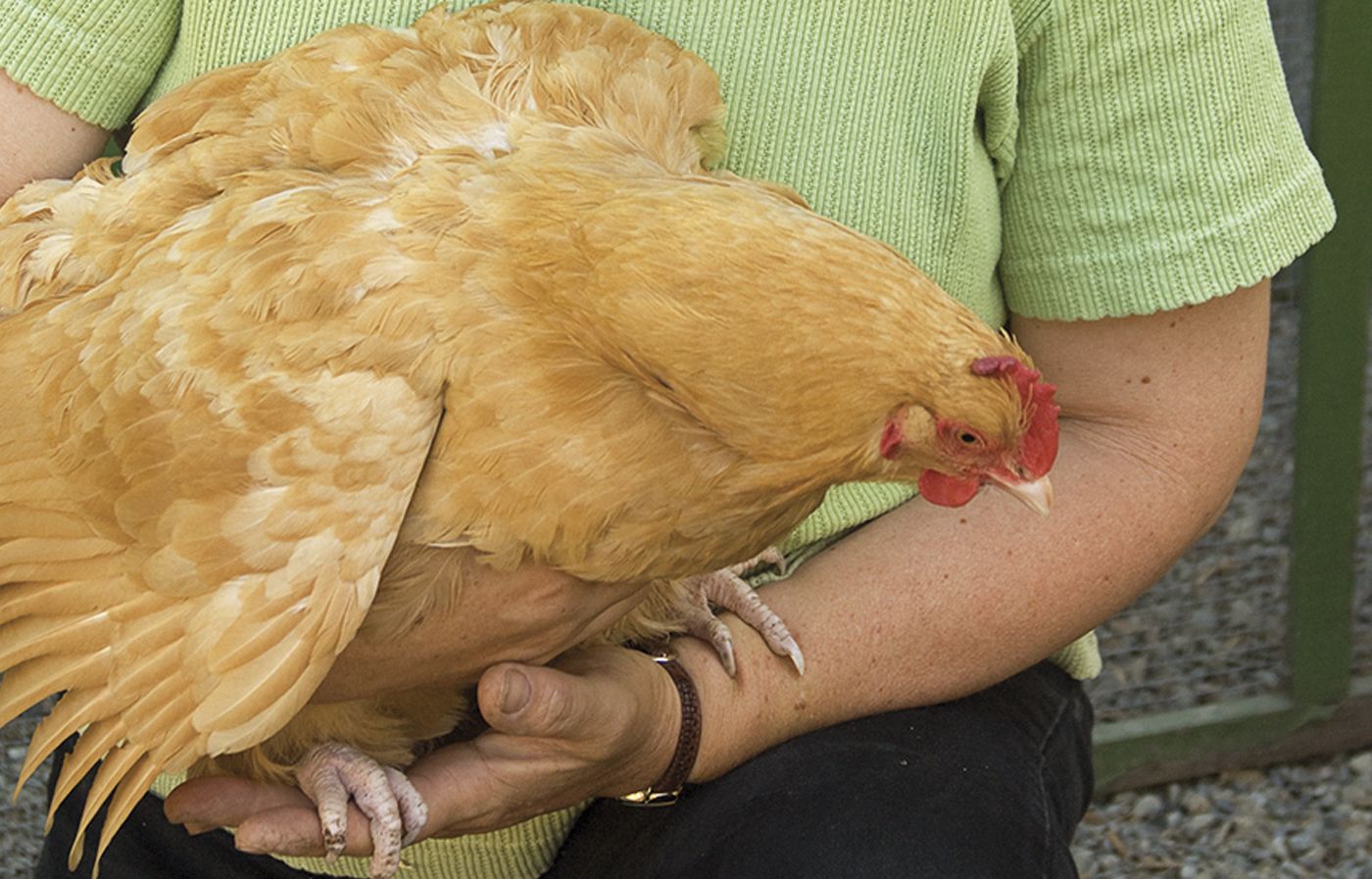
A landscape designer and teacher, Carlson moved to this home six years ago with her husband and two children and began by studying the big picture: where the sun fell, what the soil was like, how rainwater flowed, where it collected. Then, as soon as she had ripped out ivy and overgrown shrubs, taken down a dead cherry tree, and removed lawn to widen the planting beds, she started enriching the sandy soil with coffee grounds collected from local coffee shops. “They add organic matter, which breaks down slowly, and worms love the paper filters,” she says of the cast-off grounds, which normally head for the landfill in plastic bags. “Plus, they smell great!”
Shown: Homeowner Jennifer Carlson, who runs her own design/build landscape business, holds Zelda, one of three hens she keeps to help aerate and fertilize the soil and to supply eggs.
Low-Maintenance Yard
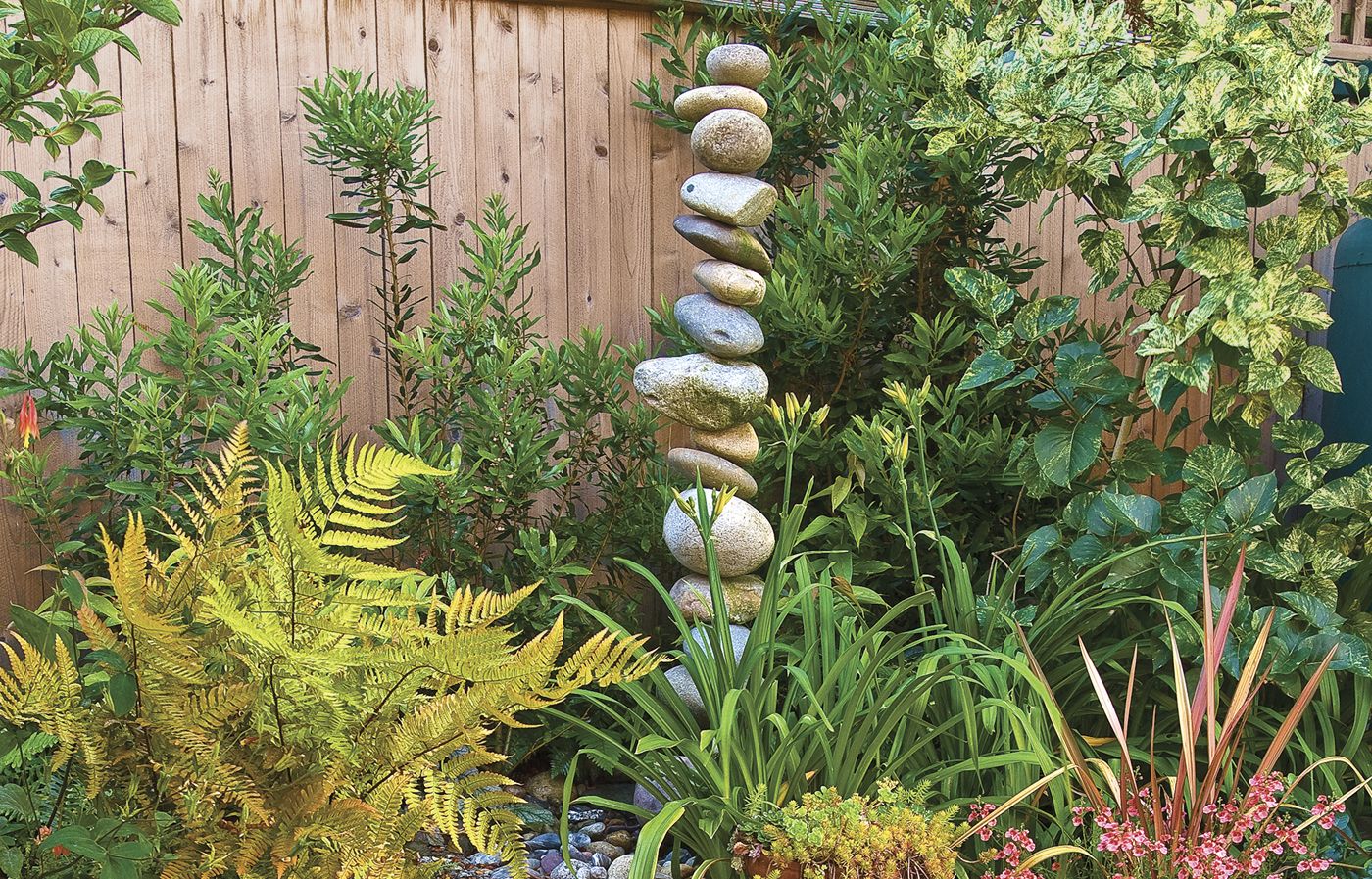
She designed the garden to nearly take care of itself. “I’m out here just five times a year to deadhead, weed, or clip back,” she says of her maintenance regimen. “The rest of the time, the plants need to shine on their own.” She repeats tough, durable varieties that have interesting color, leaf shape, and texture, adding in plenty of edibles and herbs as well as native plants to feed and shelter birds and other wildlife. The rabbits, hens, and other fowl she keeps feed on garden scraps and contribute fertilizer.
Shown: The stone sculpture (center) is actually a pebble fountain.
Planning Your Own Patch of Green
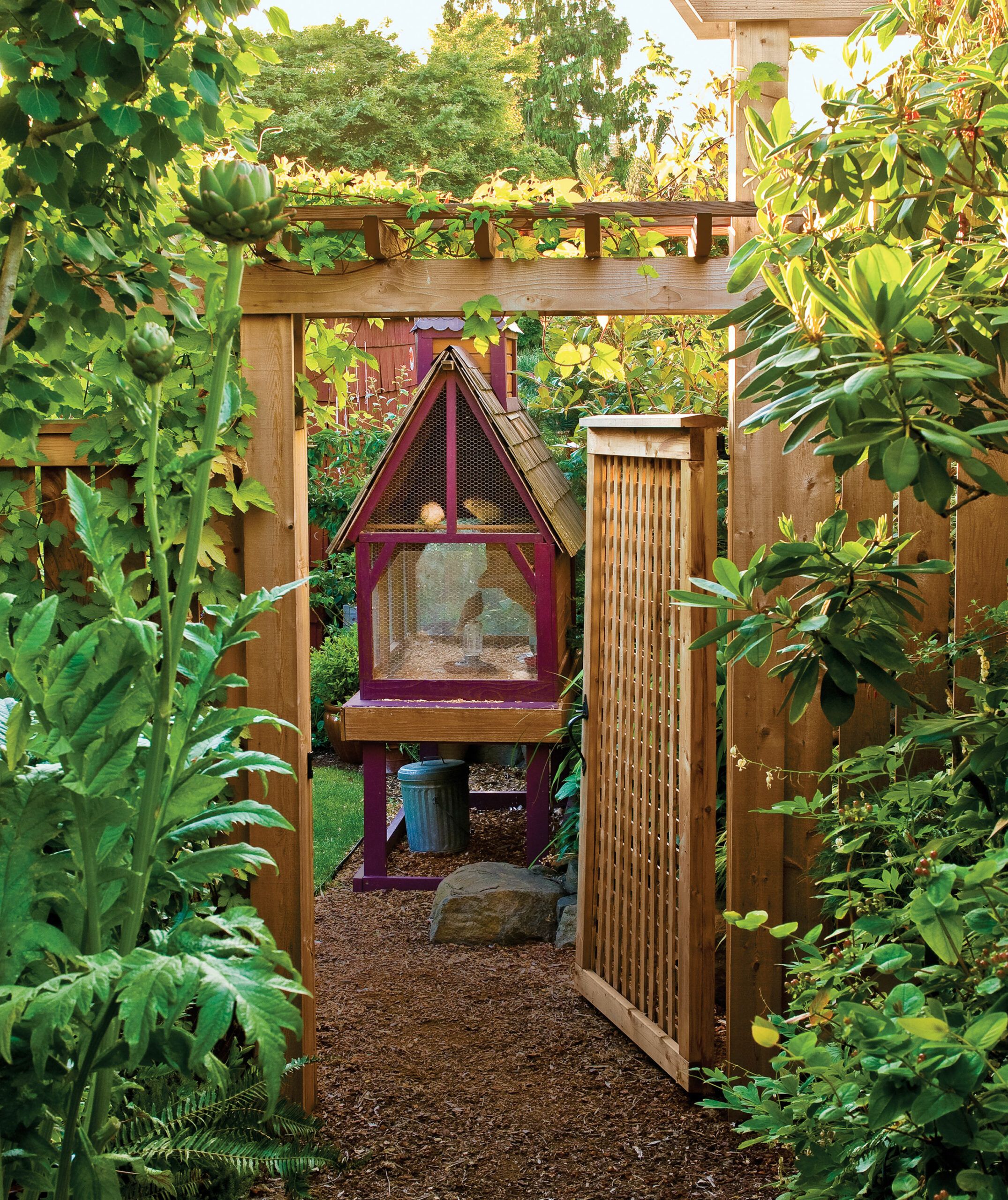
In Carlson’s backyard, the fence and arbor are so handsome, the low-maintenance plantings so lush, that the property fits seamlessly into its gracious neighborhood of older homes. You’d never guess this earth-friendly haven, with its animals and edibles, is more akin to a working farm than a typical city garden.
Shown: Four ring-neck doves and a quail yield eggs and manure; they reside in an outdoor aviary Carlson built from salvaged shipping pallets, roof shingles, and sparrow netting.
Green-Roofing for Rabbits
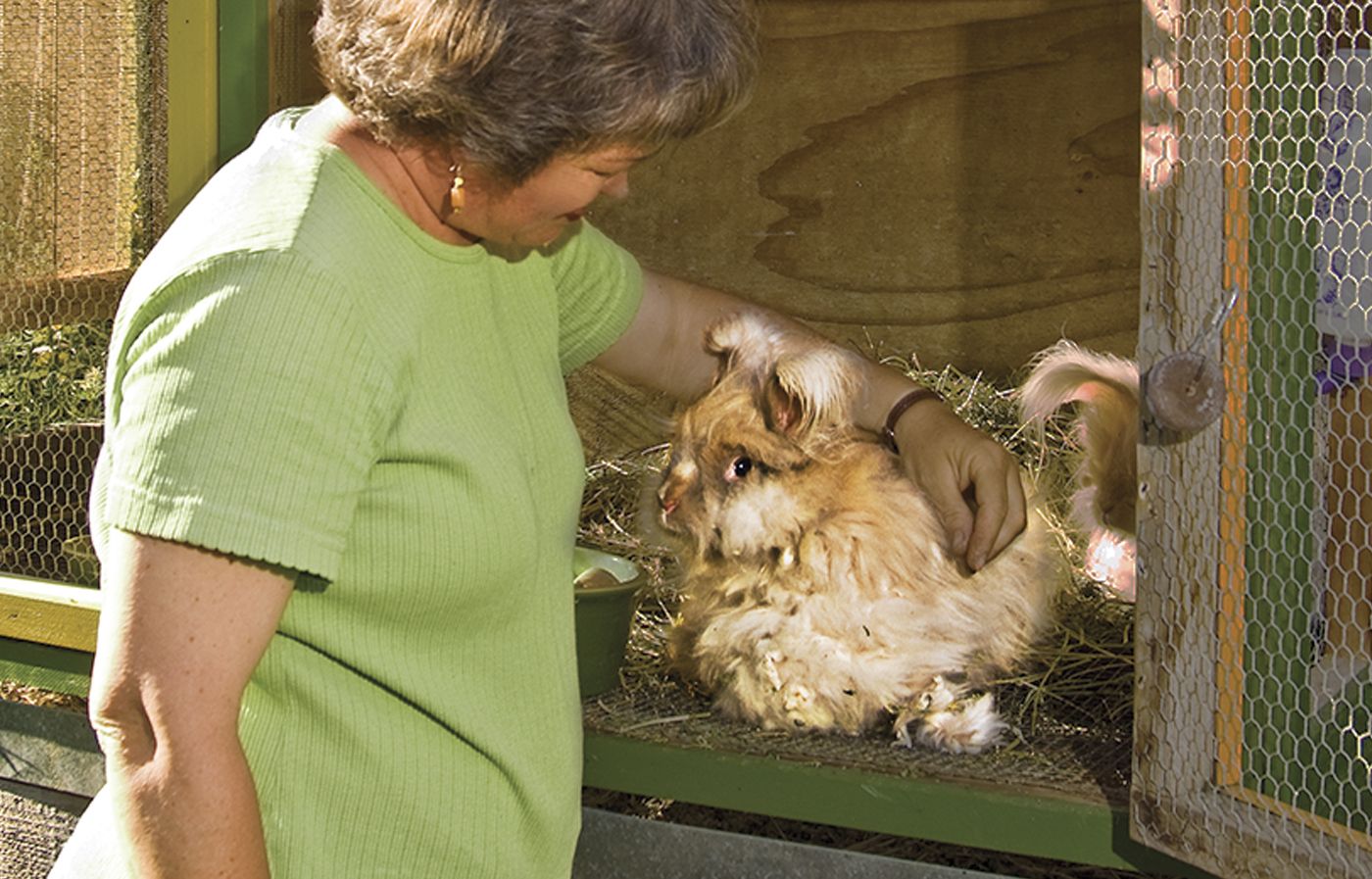
Carlson built the green-roofed rabbit hutch shown here. The alfalfa hay bedding and droppings of the fluffy Angora rabbit brothers, Peaches and Mocha, are collected for fertilizer, and Carlson gathers and spins their fur into yarn. The hutch’s sedum-covered roof absorbs rainwater.
Colorful Coops
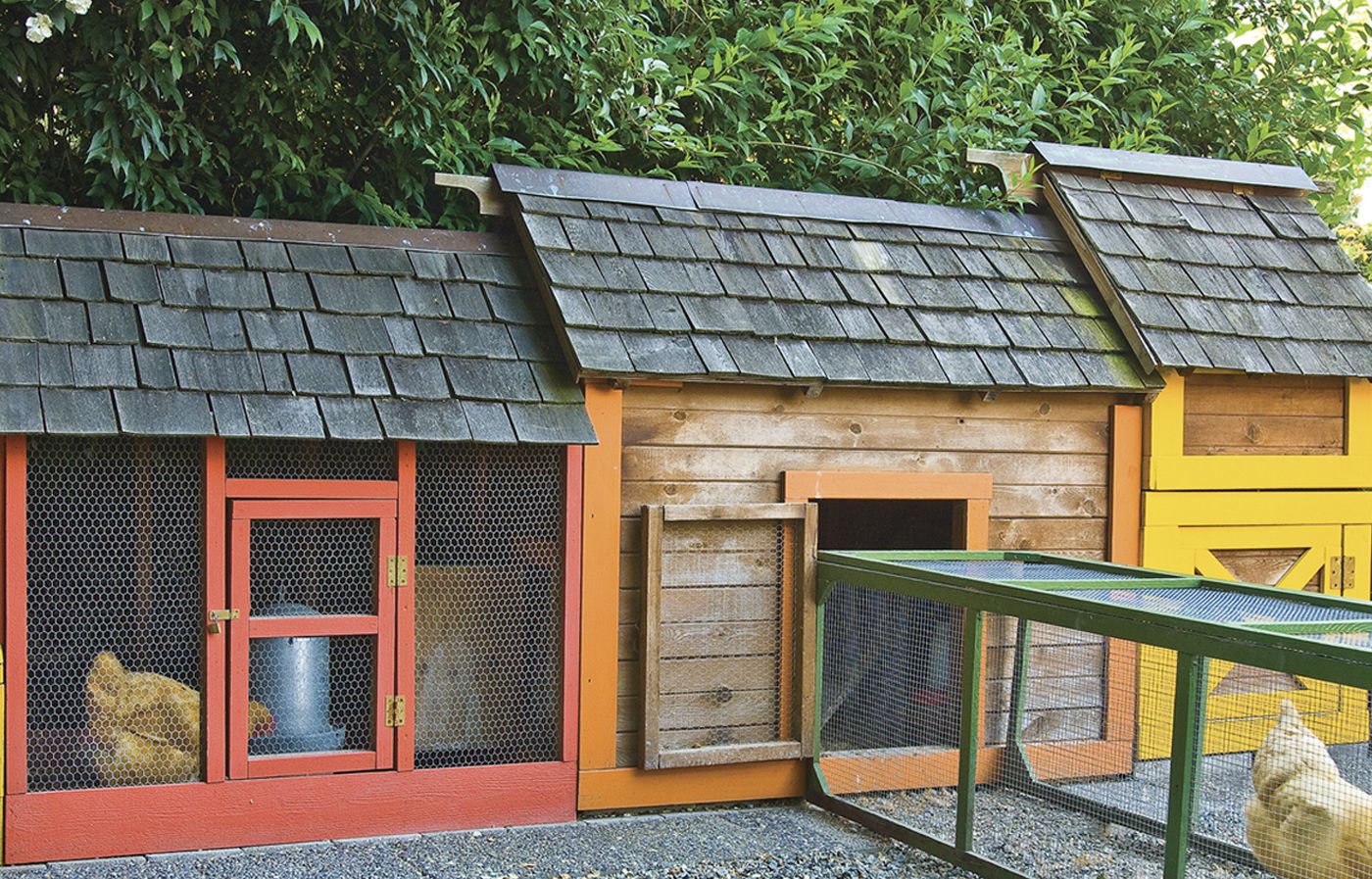
Carlson also built the chicken coop, with bright red, orange, and gold trim to enliven the landscape and draw attention to their occupants.
Portable Pen for Fertilizing
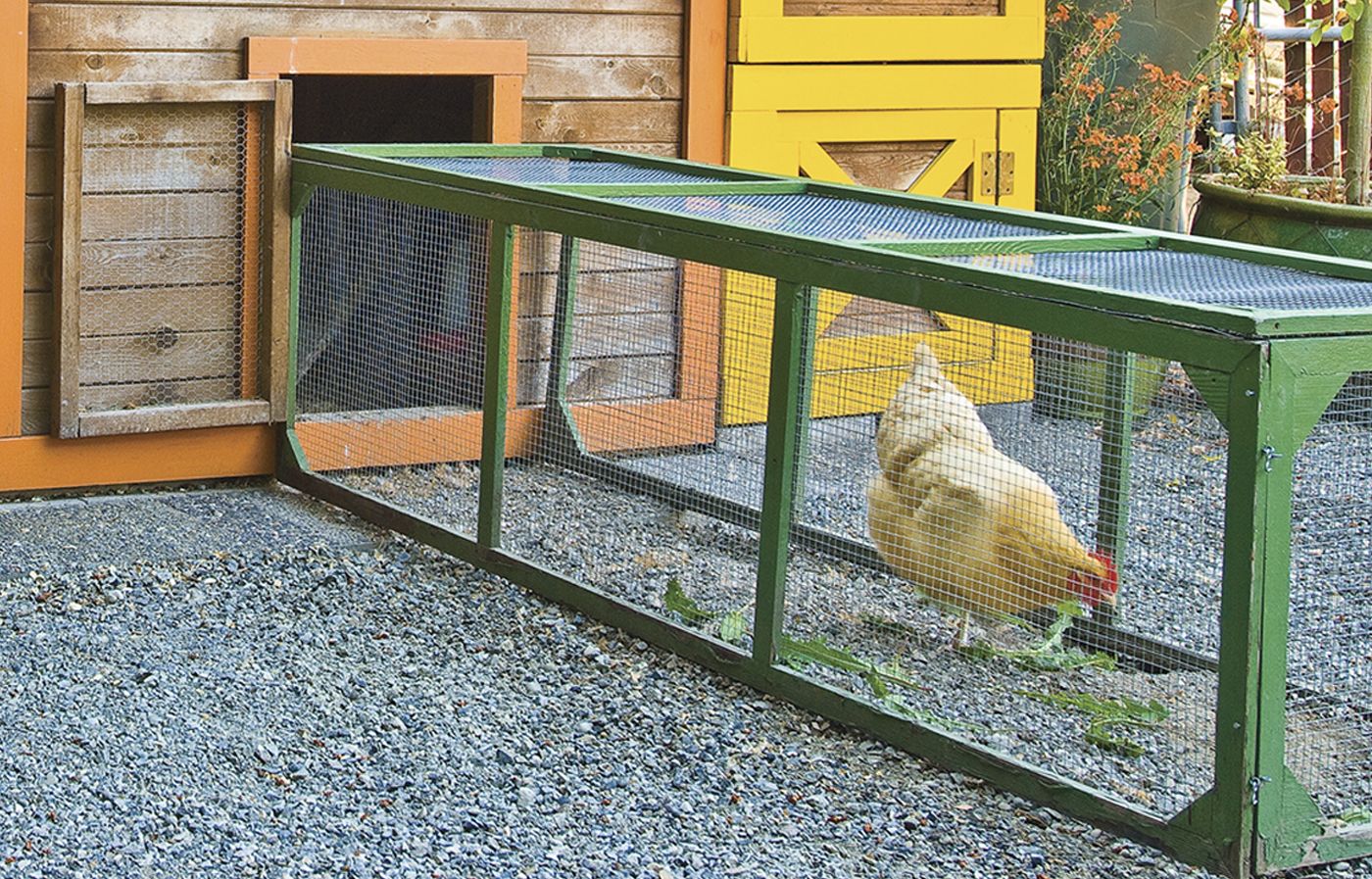
Three Buff Orpington hens (the maximum number of chickens allowed on a Seattle residential lot) are moved around in a bottomless portable pen built from salvaged cedar and hardware cloth. This way, the chickens’ tasks of fertilizing and turning over the soil is distributed throughout the garden. At night, the hens return to the safety of their brightly painted coop home. All the fowl provide eggs the family eats.
Harvesting Rainwater
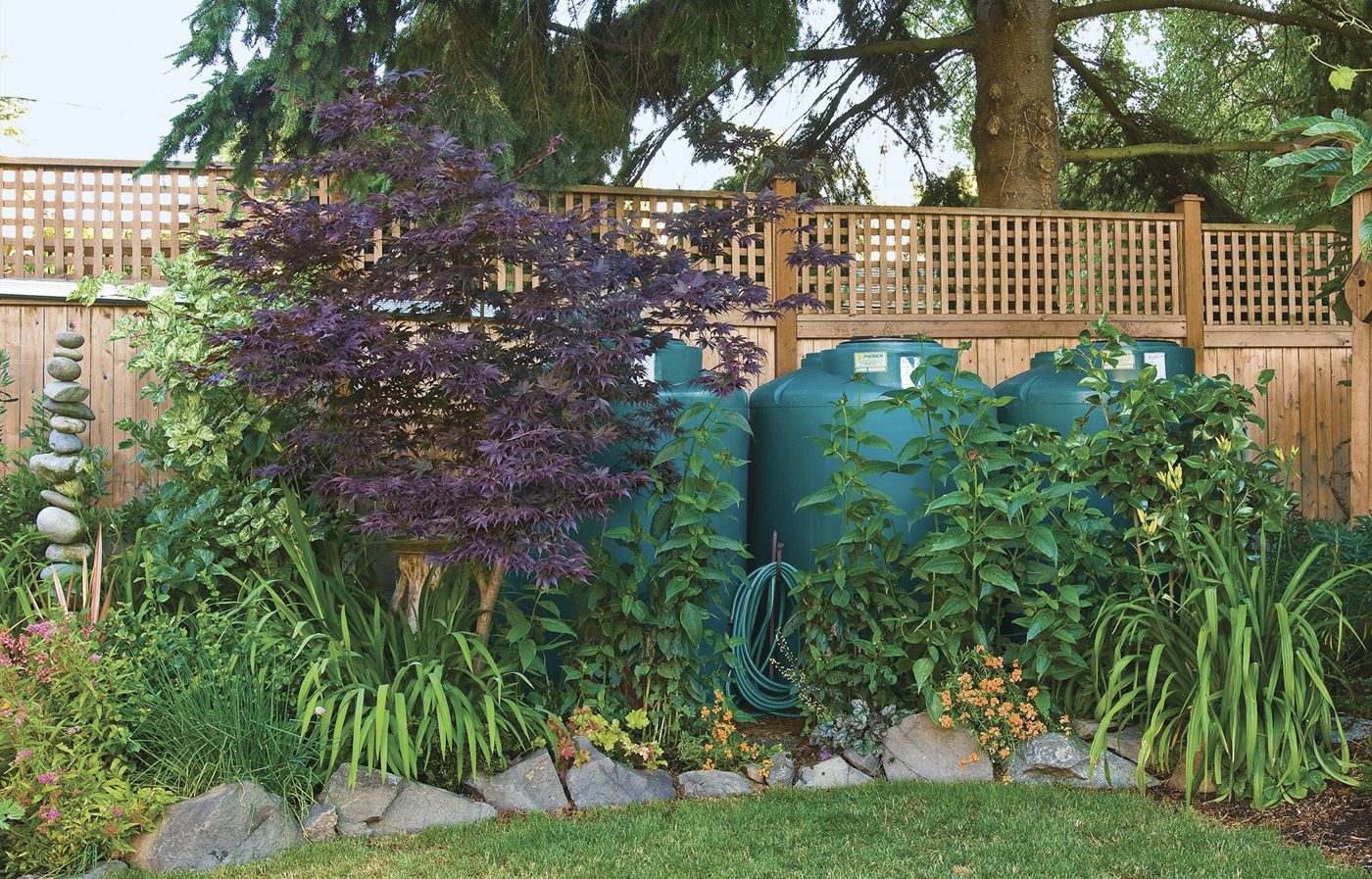
Though Seattle receives 36 to 38 inches of rainfall each year, summers tend to be dry. So between September and May, Carlson collects over 4,000 gallons of rainwater off her roof, storing it in three cisterns lined up against the back fence. In this way, the 950-square-foot roof provides sufficient water to keep the garden going all summer, including the lawn and vegetable beds. When it’s time to water, Carlson simply attaches a garden hose or hooks up a sprinkler to a small utility pump submerged in each of the 625-gallon polypropylene storage tanks. “I’ve never used it all up over the summer,” she says proudly of her free irrigation supply. Siting the cisterns was key, since they inevitably overflow in winter. Here, excess water runs onto a gravel area, where it gradually filters down to recharge an underground creek bed.
Modern Composting
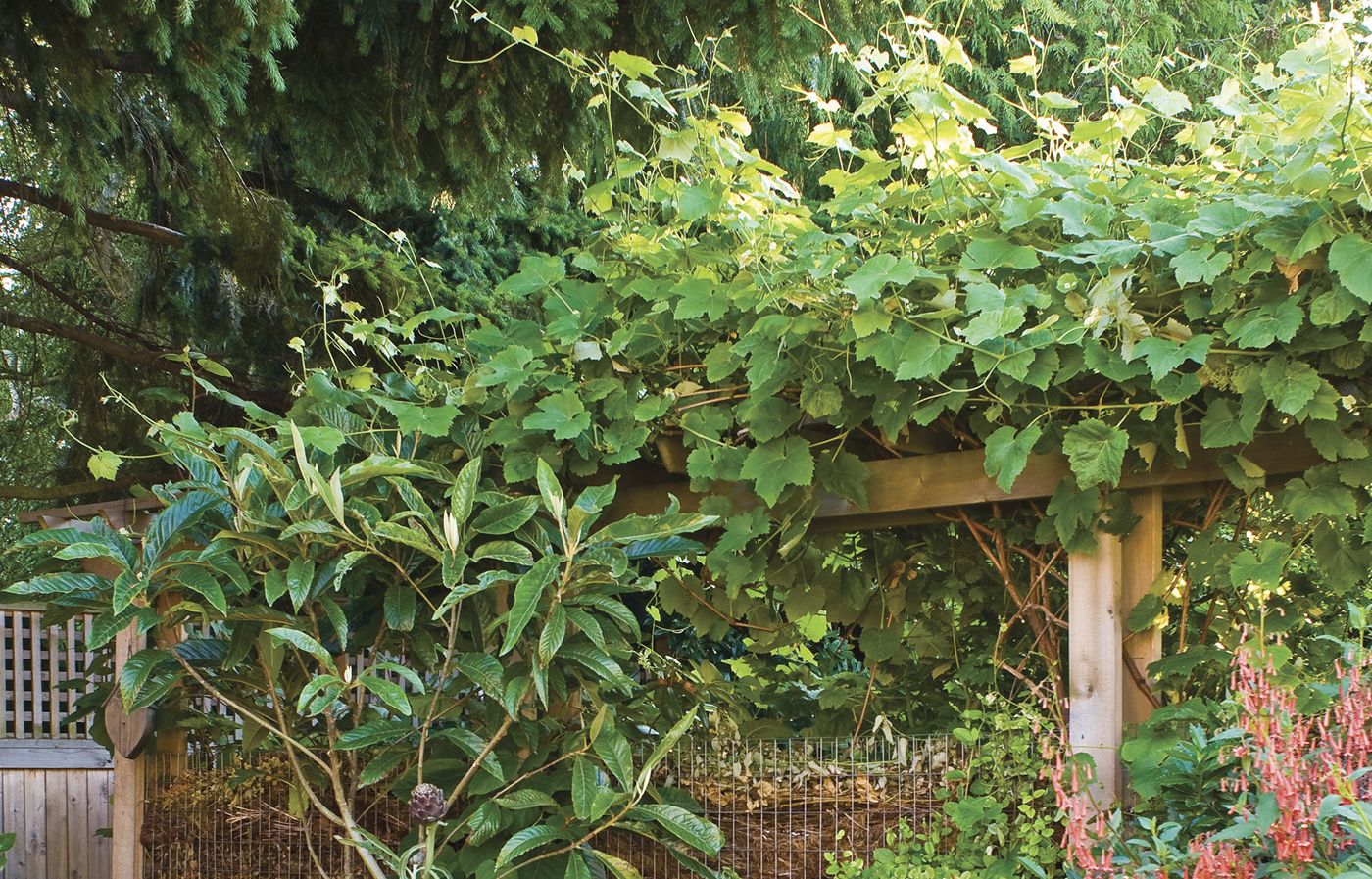
When layer after layer of yard waste is sandwiched between the parallel sections of wire that make up the composting fence (shown here), it almost looks like a stratified geological find. But this clever fence is thoroughly modern. Carlson designed and built it out of cedar posts and welded wire fencing, and topped it with an arbor draped in kiwi and grape vines. It also works as a privacy screen to shield the garden from the parking area. Most fallen leaves and clippings fit neatly inside, cutting way down on the amount of woody waste that needs to be hauled off the property. Wrens and chickadees are attracted to the dense wall of vegetation, and, best of all, over time the green waste breaks down to feed the plants around it. In addition, four bins are used year-round to turn manure, animal bedding, yard waste, and kitchen scraps into more compost to enrich the garden beds.
Permeable Patio
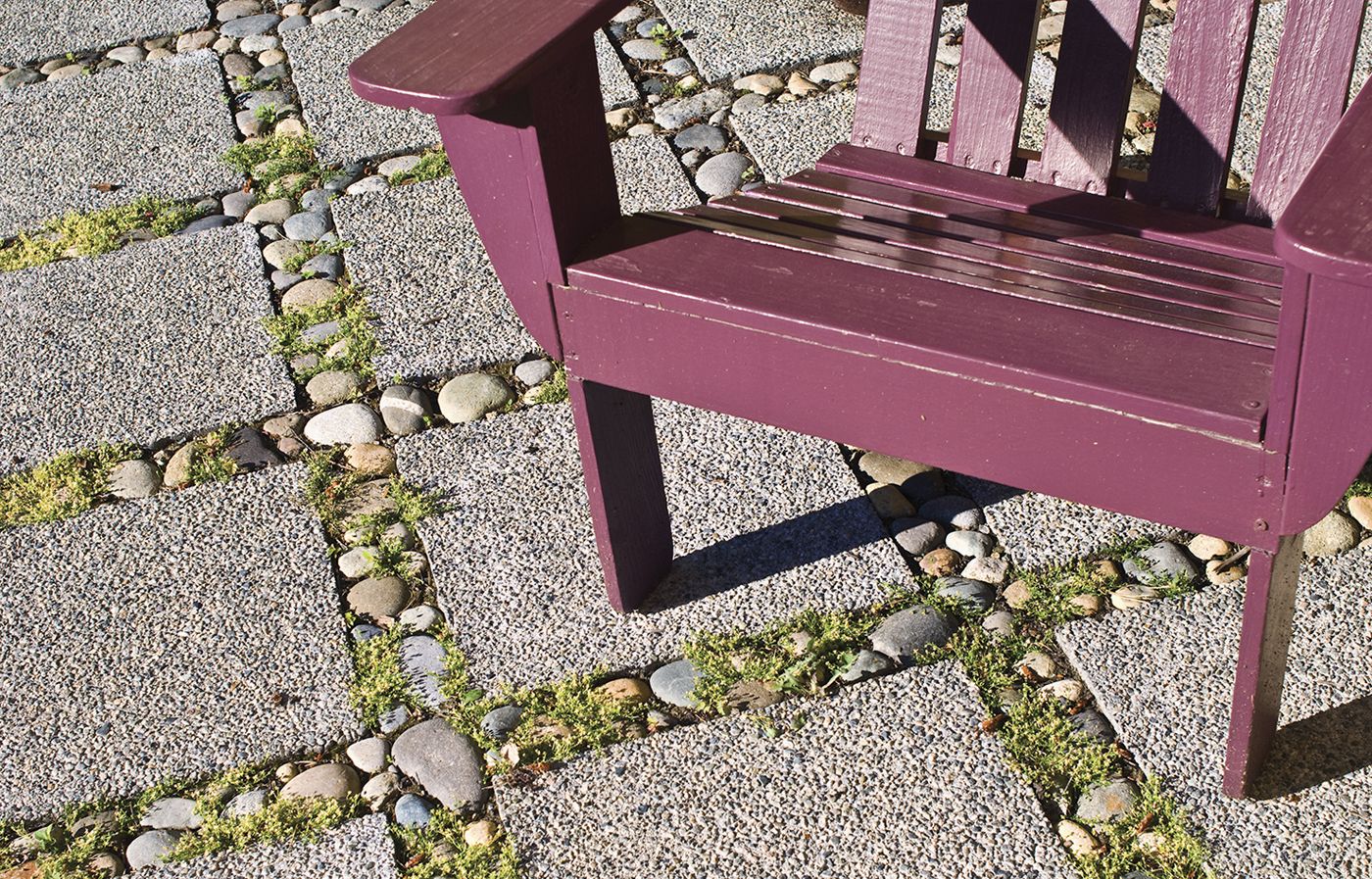
A foot of crushed rock, a layer of landscape fabric, and an inch of sand form the base of the backyard patio, Carlson built to replace an old, impermeable concrete slab. She laid ribbons of stones she had collected for years—bounty sifted out of the soil in her clients’ gardens—between aggregate pavers. Then she swept a commercial compost made from garden clippings and vegetable trimmings into the spaces between the pavers to promote feathery moss growing in the gaps.
An Edible-Ornamental Mix: Vegetables
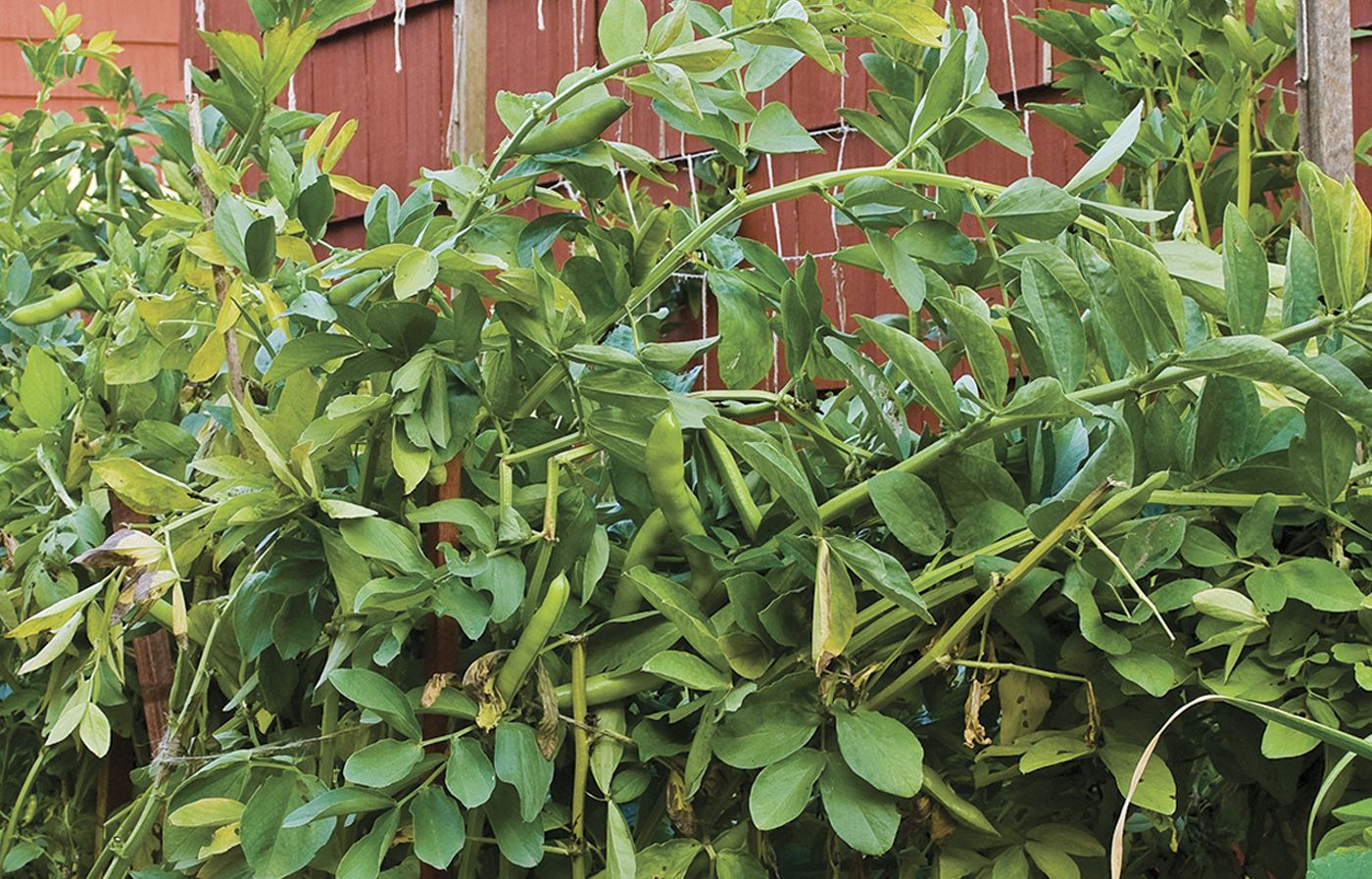
Every inch of ground is either productive or pretty, and often both.
Optimized Vegetable Growing Space
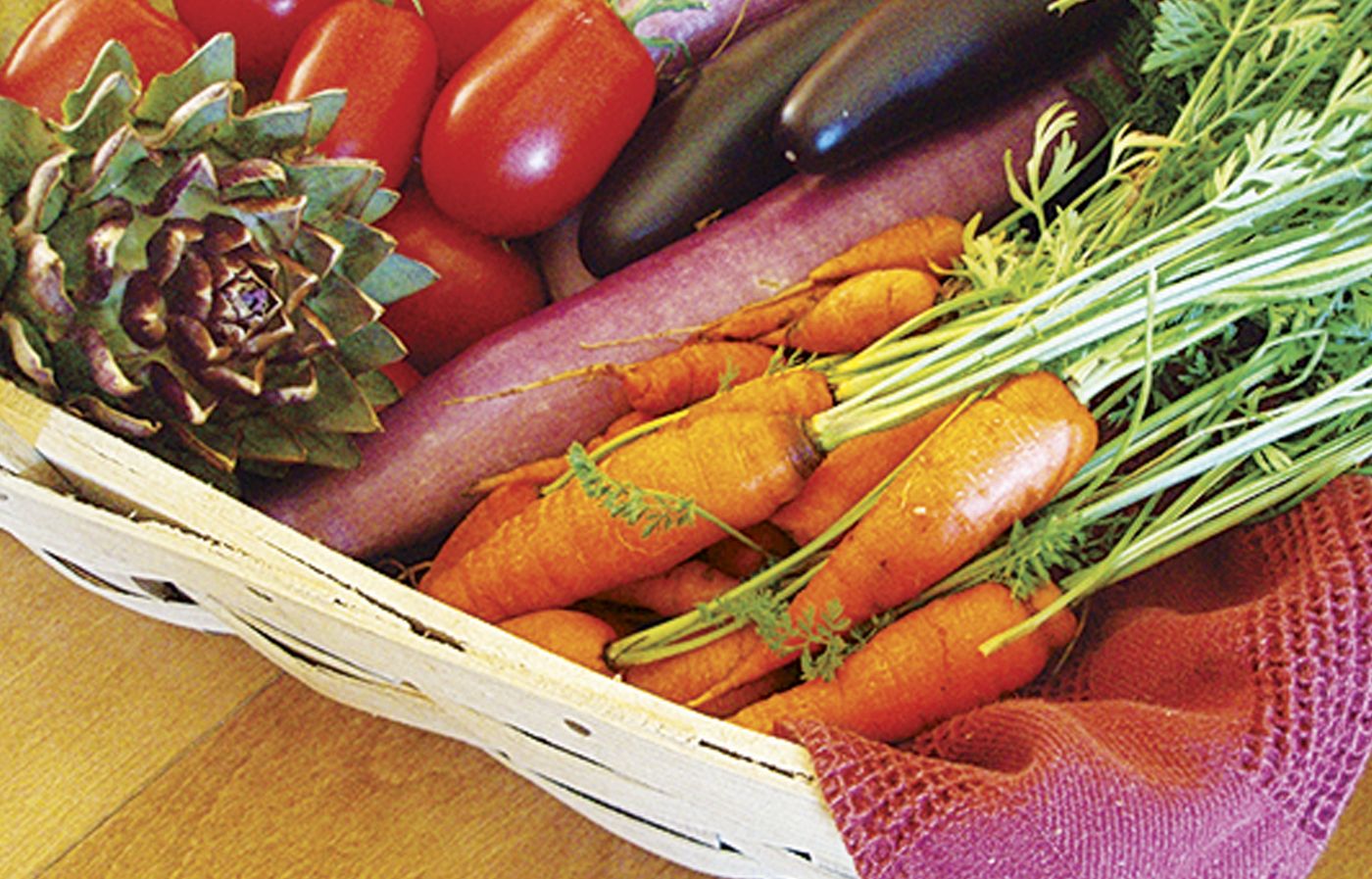
Most of the vegetables grow in three raised beds nestled between the garage and fence, maximizing sunlight reflected off the outbuilding’s wall to ripen tomatoes, eggplant, and peppers.
An Edible-Ornamental Mix: Fruits

In a tour de force of space saving, a 15-foot-long espaliered fruit tree fence yields Asian pears, apples, and Italian prune plums. Blueberry bushes are layered underneath, with a groundcover of strawberries shading their roots. Every shrub, tree, and perennial that doesn’t provide food is vetted for drought tolerance, low maintenance, and resiliency.
An Edible-Ornamental Mix: Asian Pears
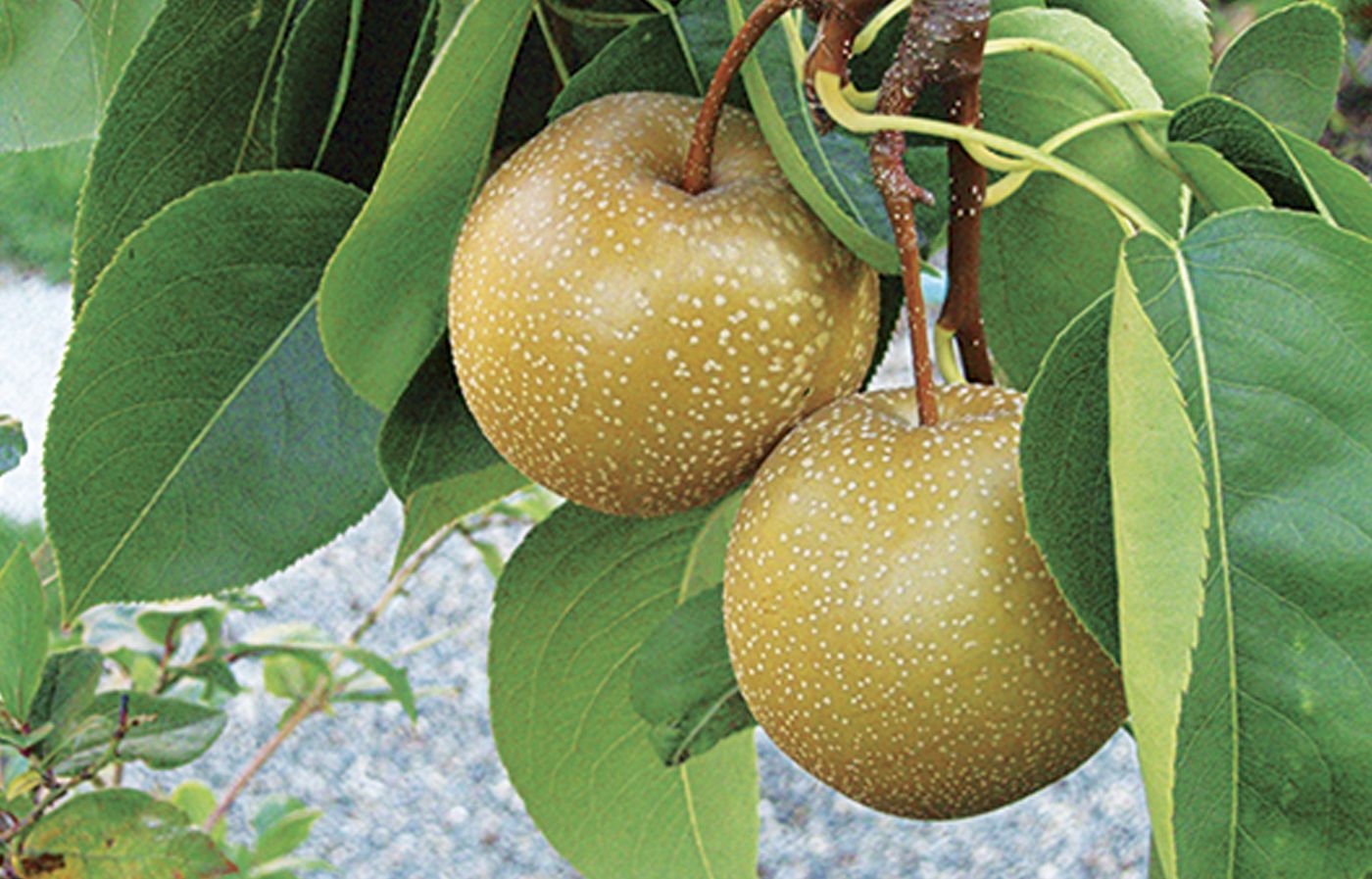
A short list of Carlson’s favorites include Northwest natives, such as vine maple (Acer circinatum), red-flowering currant (Ribes sanguineum), and Pacific wax myrtle (Myrica californica). She favors small shrubs, such as evergreen huckleberry (Vaccinium ovatum) and salal (Gaultheria shallon), mingling with Western sword fern (Polystichum munitum).
Shown: Asian pears
Garden Harvest: Edible Flowers
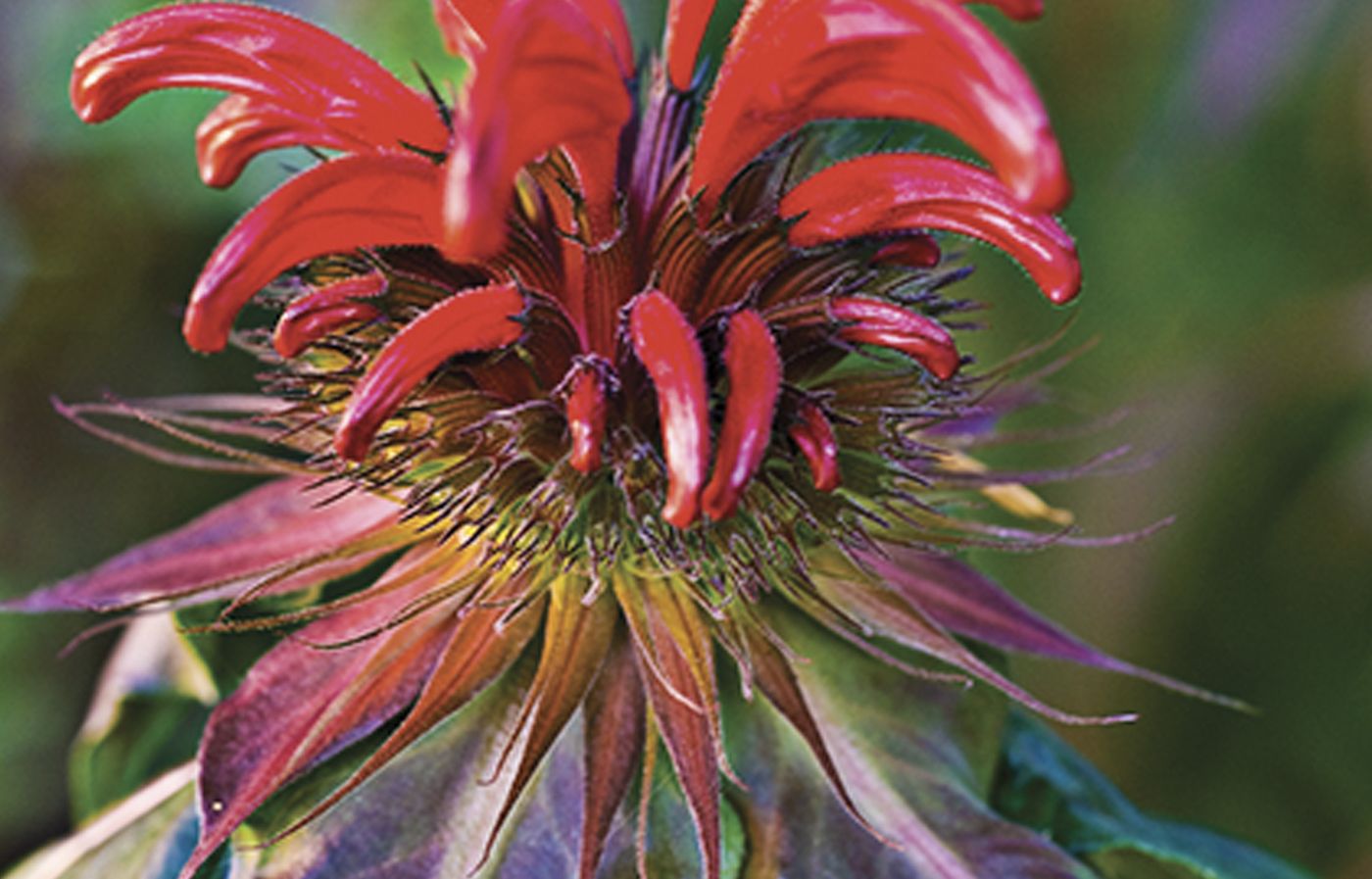
A profusion of edible, flowering, and foliage plants grow in this Seattle backyard, including bee balm (shown here). According to the National Gardening Association bee balm flowers attract butterflies, hummingbirds, bees, and other nectar-seeking creatures. Leaves and flowers from this plant can be used to make tea. The plant blooms for early to late summer and grows 2 to 4 feet tall. The plant is low-maintenance, multiplies readily, and tolerates wet soil. Select a site with full sun to light shade.
Garden Harvest: Artichoke
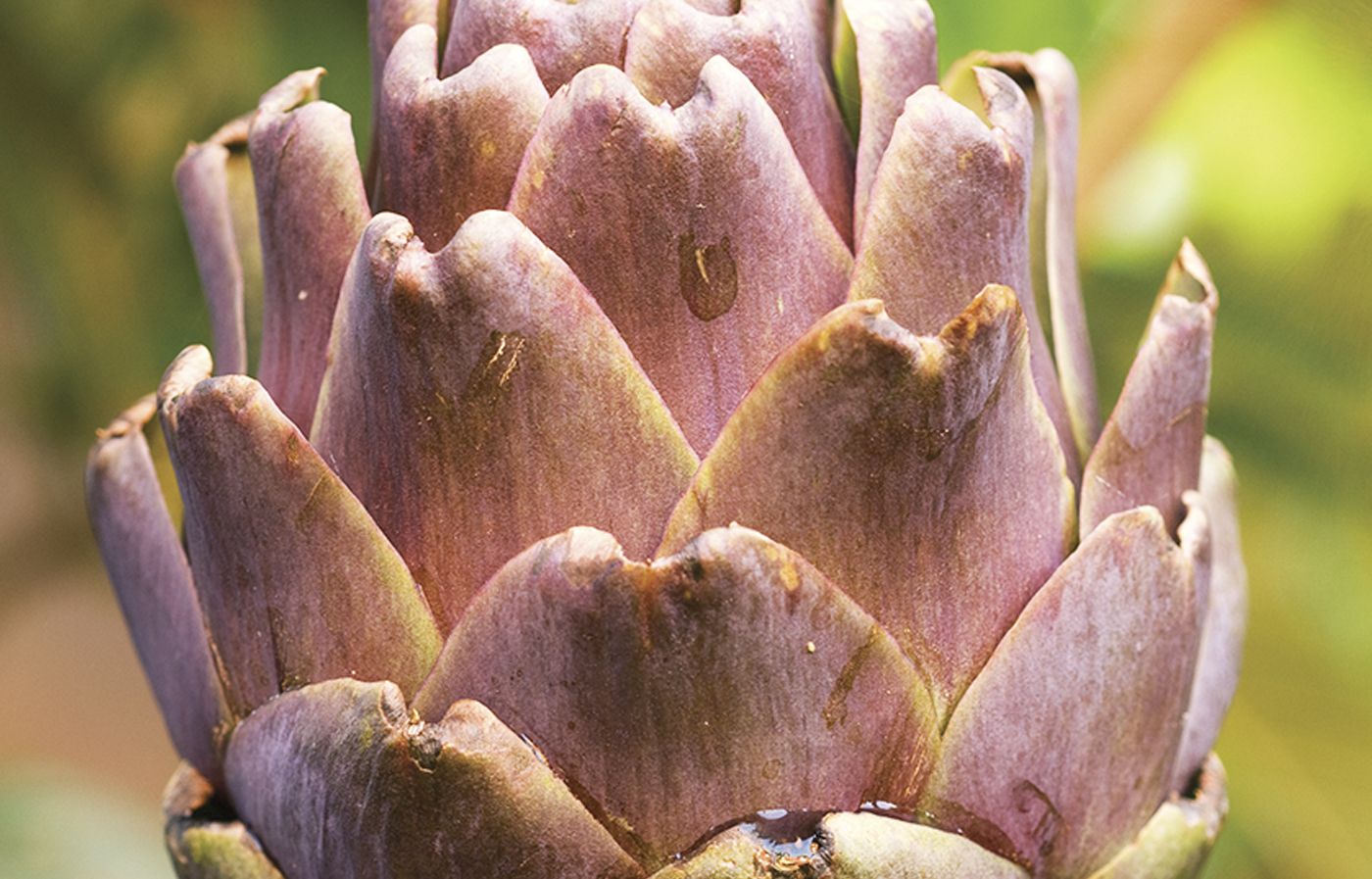
Carlson also plants five kinds of artichoke. A perennial, the plant is edible and offers the dramatic visual interest of succulent plants. According to the California Artichoke Advisory Board the artichoke is a perennial in the thistle group of the sunflower (Composite) family and in full growth the plant spreads to cover an area about six feet in diameter and reaches a height of three to four feet.
The Garden Plan: From Coops to Crops
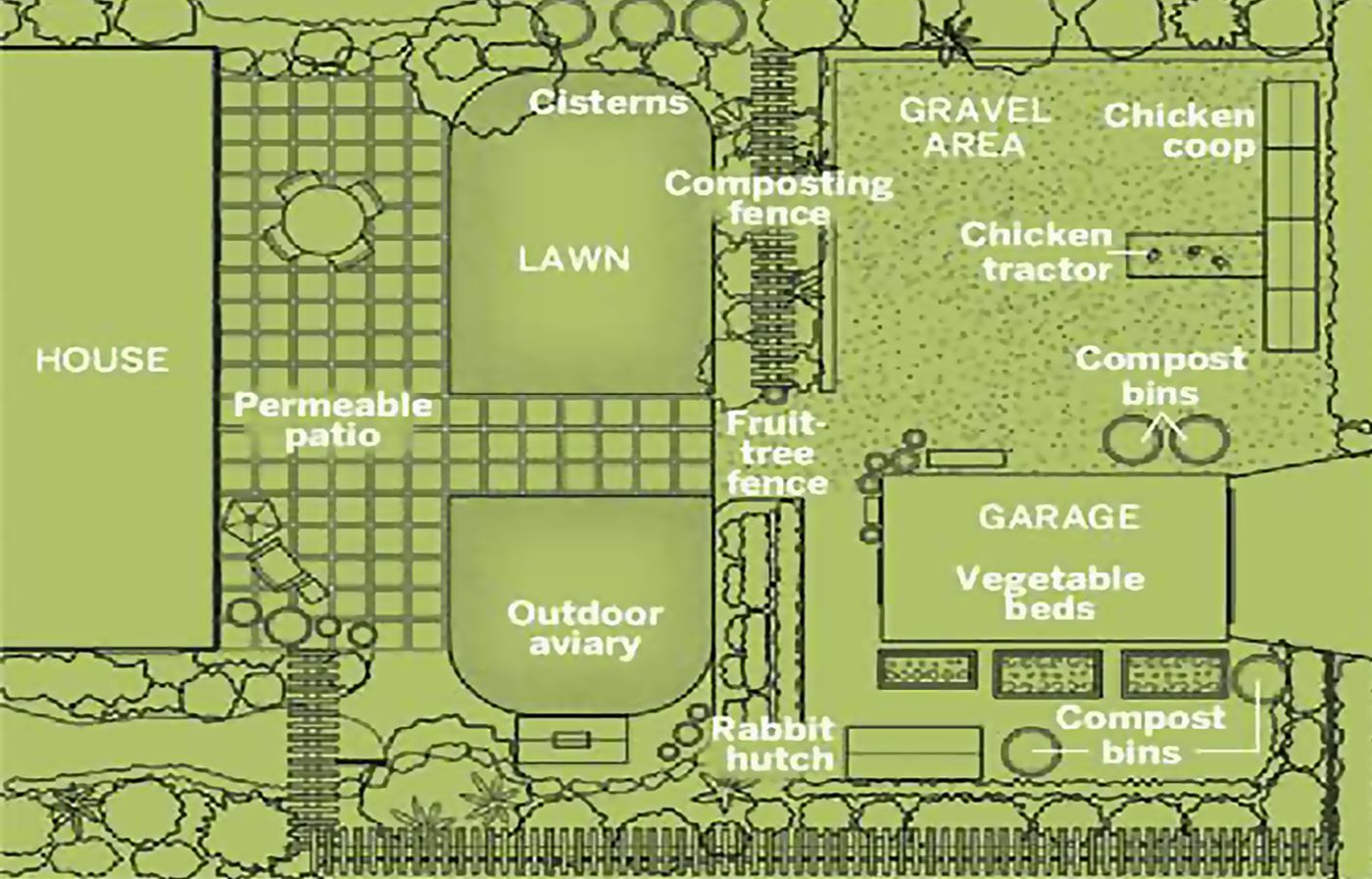
You can match the garden features on previous pages to their location on this plan of Carlson’s 60-by-62-foot backyard to get a better sense of the entire space.
